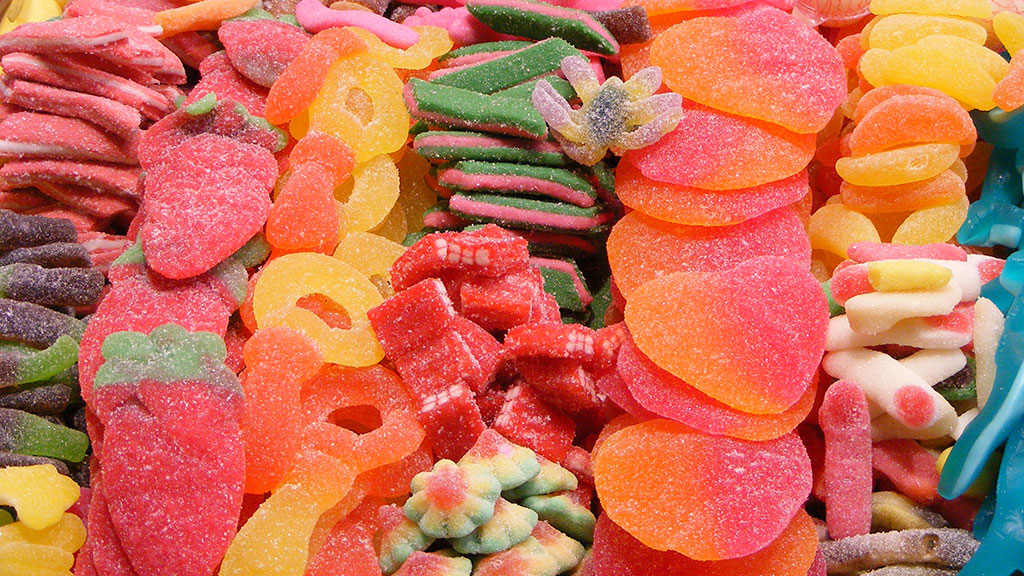
Sugar in some form can be found on almost every aisle of the supermarket—in produce, desserts, soups, preserved fruit—in addition to the lollies, cakes, and biscuits. In fact, the average person consumes about 50 kilograms of sugar every year! Many experts say this is a recipe for disease and debilitation, as a sweet tooth will cause tooth decay. It can also lead to weight gain, and it increases the risk of succumbing to a range of lifestyle diseases such as diabetes. For some people, sugar is addictive.
Connie Bennett, coauthor of Sugar Shock, is a radio host and certified health counsellor, who recently celebrated 10 years of “sugar sobriety,” as she calls it. While working as a journalist in Los Angeles, she found herself meeting deadlines on a diet of refined carbohydrates, chocolate, licorice, and hard lollies.
But her health began to suffer along with her mood. In fact, Bennett says she had a laundry list of seemingly unrelated symptoms, including insomnia, anxiety and digestive problems.
Then, in a visit to an integrative physician, she was diagnosed with sugarrelated hypoglycemia. Jolted into reality, she determined to lick her sugar habit, and she spent five years researching its effects on the body.
bitter truth of sweets
Stephen Sinatra, author, cardiologist, nutritionist and anti-aging specialist, was the medical consultant for Sugar Shock. He says research reveals that too much sugar prematurely ages the skin, and causes tooth decay and obesity. It also helps set the stage for diseases such as Alzheimer’s, type 2 diabetes, heart disease, some cancers and the newly emerging metabolic syndrome, also called insulin resistant syndrome.
He explains that the overconsumption of sugar creates low-grade inflammation in the body, which can wreak havoc over time. In fact, Sinatra says, researchers are discovering that inflammation rather than cholesterol may be the cause of heart disease. This helps explain why people with diabetes are at higher risk of heart attack.
Richard Johnson, author of The Sugar Fix and a researcher at the University of Florida, says our penchant for sugar is actually a built-in survival mechanism, which is useful in situations of starvation or dehydration. He adds that sugar plays a role in a healthy diet, as it is found in small amounts in natural foods, with antioxidant and fibre-rich fruits having the highest concentrations.
But he believes we are simply consuming too much of a good thing, especially fructose.
Although fructose, the “sweetest sugar,” is lower on the glycemic index, because it is found in natural foods, it was believed to be a safer option for people with diabetes. But research reveals that too much of it may present a unique set of problems.
Says Johnson, “It is clear that our bodies were only designed for small amounts.” In fact, he recommends having no more than 25 to 35 grams per day. According to Johnson, fructose is metabolised differently in the body from other sugars, and large doses have been shown to induce insulin resistance, raise triglycerides and increase blood pressure. And recent studies, such as one led by nutritionist Peter J Havel, at the University of California, reveal that fructose may even interfere with appetite hormones, which can lead to overeating. Of course, table sugar also contains some fructose and has been a staple in the Western kitchen for hundreds of years. But with the inexpensive sweetener high-fructose corn syrup (HFCS) in most processed foods, softdrinks and fruit juices, our diets are easily overloaded with it.
of mice and men
So what drives the hankering for sugar when we’re not in imminent danger of starvation or dehydration?
Kathleen DesMaisons, author of Sugar Addicts Total Recovery Program, works with sugar-addicted people. She says that when our bodies are flooded with unnatural amounts of sugar, the brain’s chemistry is affected and this creates a physical dependency. In fact, a growing number of animal studies are confirming this theory, including a Princeton University study that documented symptoms of withdrawal and changes in the brains of lab rats after sugar was removed from their diet.
Johnson adds that studies have shown that bingeing on sugar can affect the brain in ways that are similar to the effects of heroin.
But according to DesMaisons, those who are most susceptible to a true sugar addiction are people she calls “sugar sensitive” and who have low beta-endorphin and serotonin levels or those who have unstable blood sugar.
Robert Crayhon, a researcher, author and nutritionist, also works with some clients who have hard-core sugar habits.
He feels there are other issues that can make cravings seem insurmountable. For example, he says a lack of sleep can affect blood-sugar levels, sending us reaching for a fix throughout the day (or night).
Crayhon also says some individuals have food sensitivities that create cravings for sweets. For example, wheat is a common sensitivity, and since it is readily found in pastries and cakes, sugar consumption goes right along with it.
In addition, Crayhon says nutritional deficiencies can contribute to the problem of sugar addiction. He explains that some soils are now depleted of chromium and magnesium. A lack of these two nutrients in produce, and thus in our diet, can fuel the desire for sugar. A lack of protein and inadequate hydration can do the same thing. Finally, according to Crayhon, yeast’s “preferred” food is sugar. Thus, people with excessive yeast in their bodies may crave sugar. But he warns that this diagnosis is often missed, as an excess of yeast in the body can exist without any symptoms of the common yeast infection.
back to nature
Crayhon says avoiding sugar means navigating the supermarket by shopping the perimeters of the store. If you must venture into the packaged-food aisles, look for those foods with the fewest ingredients and that don’t have added sweeteners.
Although Crayhon feels there are some good health-food products, he says we’re often distracted by the packaging.
Basically, raw organic sugar is still just sugar with a few nutrients. And, as Bennett discovered in her struggle with hypoglycemia, many highly refined pastas, cereals and breads ultimately break down like sugar in the body.
Instead, Crayhon recommends minimally processed whole grains, including oats, rice, quinoa and amaranth.
Wendy Bazilian, a nutrition specialist at the Golden Door Spa and Resort and a coauthor of The SuperFoods Rx Diet, says a good guideline for sugar consumption is that it should not exceed 10 per cent of your daily caloric intake.
For example, with a 6280 kJ- (1500 cals) a-day diet, a person should consume no more than 10 per cent of that energy from added sugar. That’s about 10 teaspoons. But she feels this may still be too much. And food labels can be tricky, too. Her advice is to avoid high-fructose corn syrup completely.
In addition to being a chemically engineered sugar, it tends to “hang out with the wrong crowd”—the processed foods that often contain preservatives, artificial colourings and trans fats.
Bazilian points out that many of us are also getting too many sugary calories from beverages. In fact, one 375 ml can of soft drink contains 36 grams of sugar (that’s nine teaspoons), which is almost the body’s entire sugar budget for a day. Johnson adds that fruit juices can also be problematic, as some fruits have a high concentration of fructose.
But if someone enjoys juice, Bazilian says, drinking high-quality, 100-per cent juices diluted with flat or sparkling water is a good alternative.
Bazilian generally steers clear of anything synthetic, such as diet sodas and artificial sweeteners. She suggests other options for satisfying a sweet tooth, including stevia and xylitol, which can be purchased at health food stores and added to hot beverages, breakfast cereals and porridge. They are both natural and have some additional health benefits.
As for naturally sweet foods such as honey, maple syrup and agave nectar, they do have some nutritional value, but in high quantities they can also be a problem.
the sweet life
Ultimately, says Bazilian, when our diets are saturated with sugar, we miss out on the “full tasting experience.”
But when added sugars are reduced, the bitter, spicy, salty and savoury flavours begin to resurface, so we can better enjoy the natural sweetness in many foods.
When we eat mainly whole foods and a plant-based diet, everything is simplified, as there are no difficult labels to navigate and no added sugars to consider.
Then, she adds, our bodies will actually tell us what we need—if we care to listen. “But this can be challenging when we are overfed, overtired, overcaffeinated, and even over-sugared,” she concludes. Crayhon, mentioned earlier, quotes Paracelsus, an ancient alchemist, who said, “It is the dose that makes the poison.”
Bennett says that her life without sweets is sweeter, and she’s experiencing a pleasure that can be derived only from fresh fruits and vegetables. She says she’s now more energetic, positive, calm and clear-headed. And there’s the icing on her cake: when she looks in the mirror, she sees the slender, healthful result of a wholesome and sugar-free lifestyle looking back at her.













